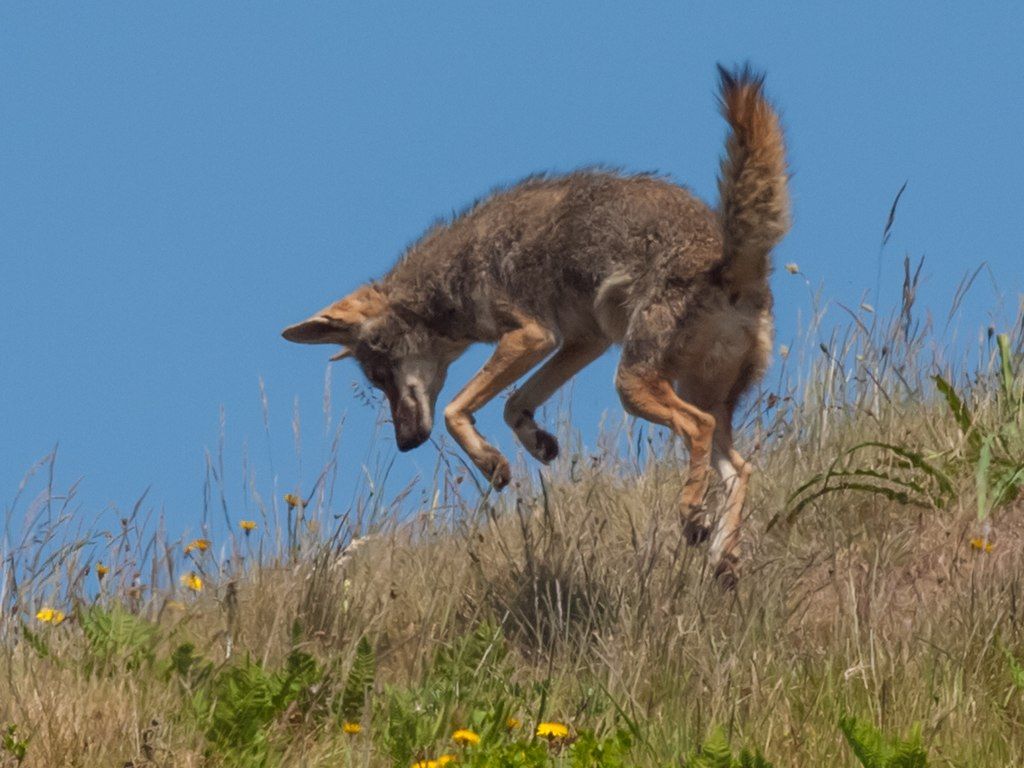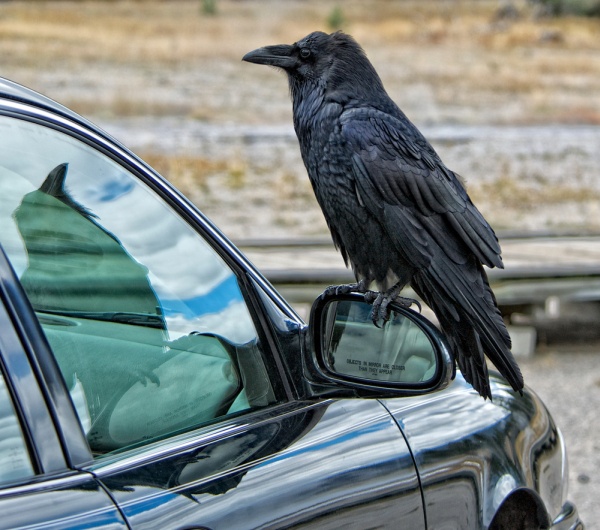
27 January 2023
Coyotes (Canis latrans) are highly adaptable and very smart about food and humans because their lives depend upon it. Of course they live where food is plentiful but in places like Pennsylvania, where they’re hunted or trapped without limit all year long, they hide from humans and operate at night. In locations with less human pressure they forage during the day and encounter their familiars — ravens and sometimes crows.
Coyotes and Corvids often meet when it’s time to eat, especially at carcasses in winter. The carcass below attracted ravens and a black-billed magpie along with the coyote.

Ravens apparently realize that coyotes are smart for they sometimes enlist their help by leading them to a carcass they cannot open on their own.

How do Corvids describe a coyote? Perhaps like this, as described by Doug Anderson.
Crows
Hunch in the trees
to gossip
about God and his inexorable
experimenting,
about deer guts and fish so stupid
you could sell them air
and how out in the deserts
there’s a dog called coyote
with their mind
but no wings. …
— excerpt from Crows by Doug Anderson from Blues for Unemployed Secret Police Curbstone Press ©2000. (Reprinted by permission, http://www.curbstone.org/). Click here for the full poem.

No wings? No problem. Here’s a coyote.
This coyote sitting on a car tho pic.twitter.com/tLXTa12Lqo
— Russ McSpadden (@PeccaryNotPig) January 5, 2023
(photos from Wikimedia Commons and Shutterstock; click on the captions to see the originals)
Coyotes are all over my neighborhood. I do live fairly close to the American River though. Neighbors are encouraged to keep their cats indoors at night and secure their chickens. Yikes! Love the vid of the coyote on the car!!
Happy Friday Kate and everyone
Great entry, Kate! Any thoughts as to why eastern coyote tend to be bigger than coyotes in the west?
Coyotes used to be only in the prairies and deserts of the West but moved east via Canada in the 1900s after wolves & mountain lions were extripated from the East. They interbred with wolves on their way through Canada so that they are mostly coyote with hints of wolf and dog. This article https://www.nps.gov/articles/netn-species-spotlight-eastern-coyote.htm says that a DNA study at “Stonybrook University found that of 462 animals tested, the average genetic breakdown consisted of 64% coyote, 13% gray wolf, 13% eastern wolf, and 10% domestic dog.”. They are larger than their western relatives.